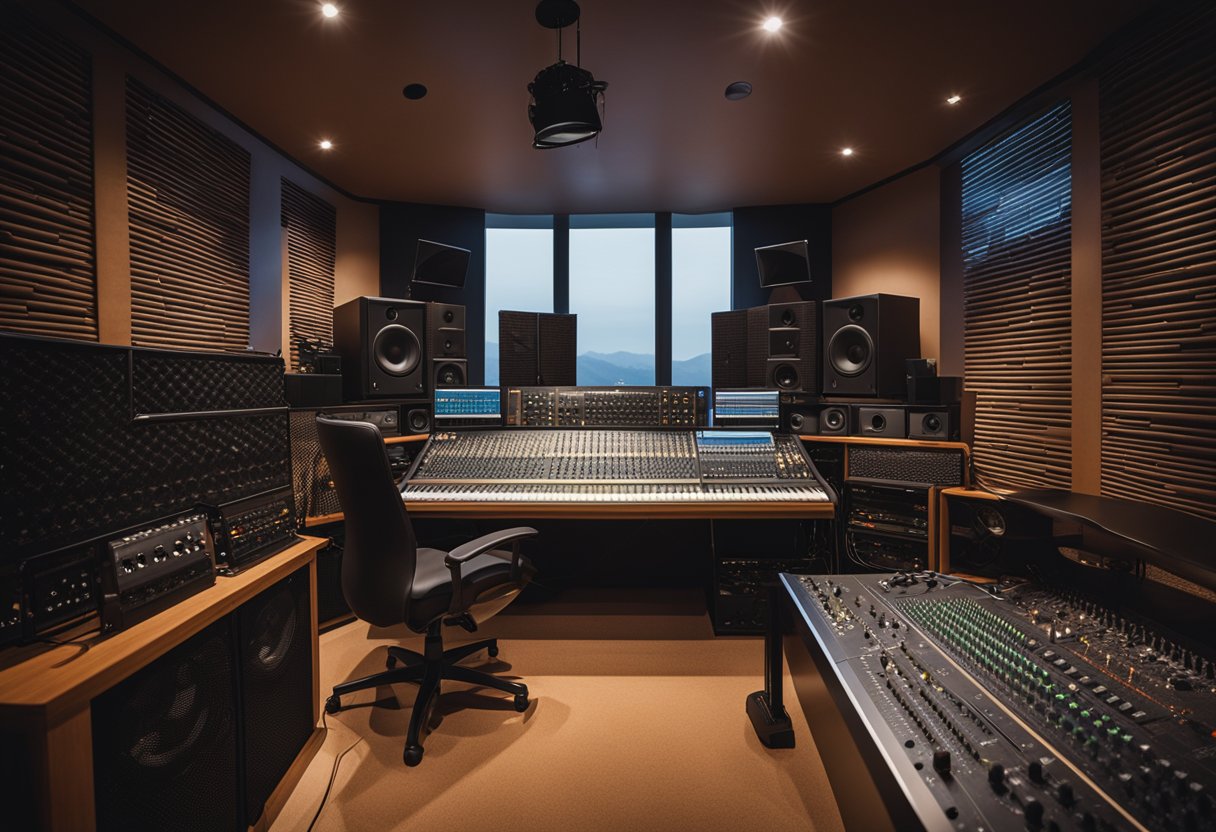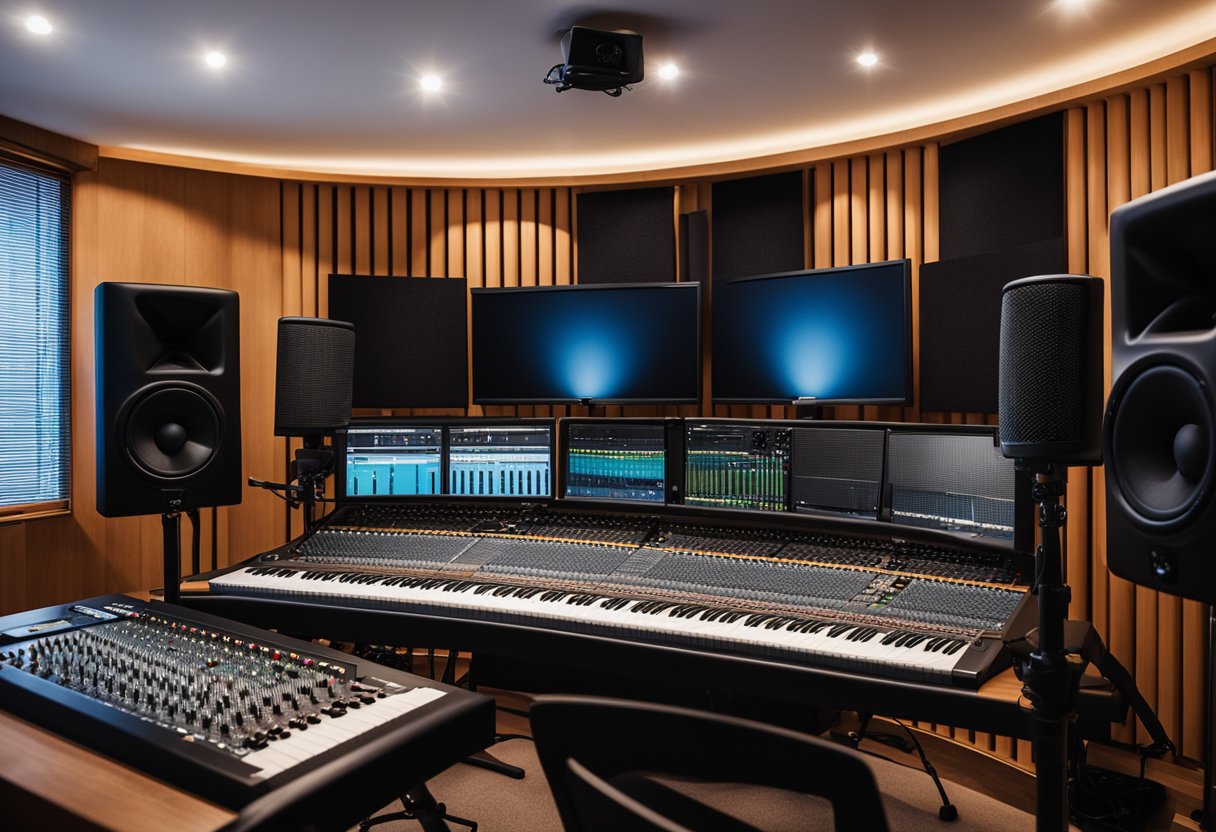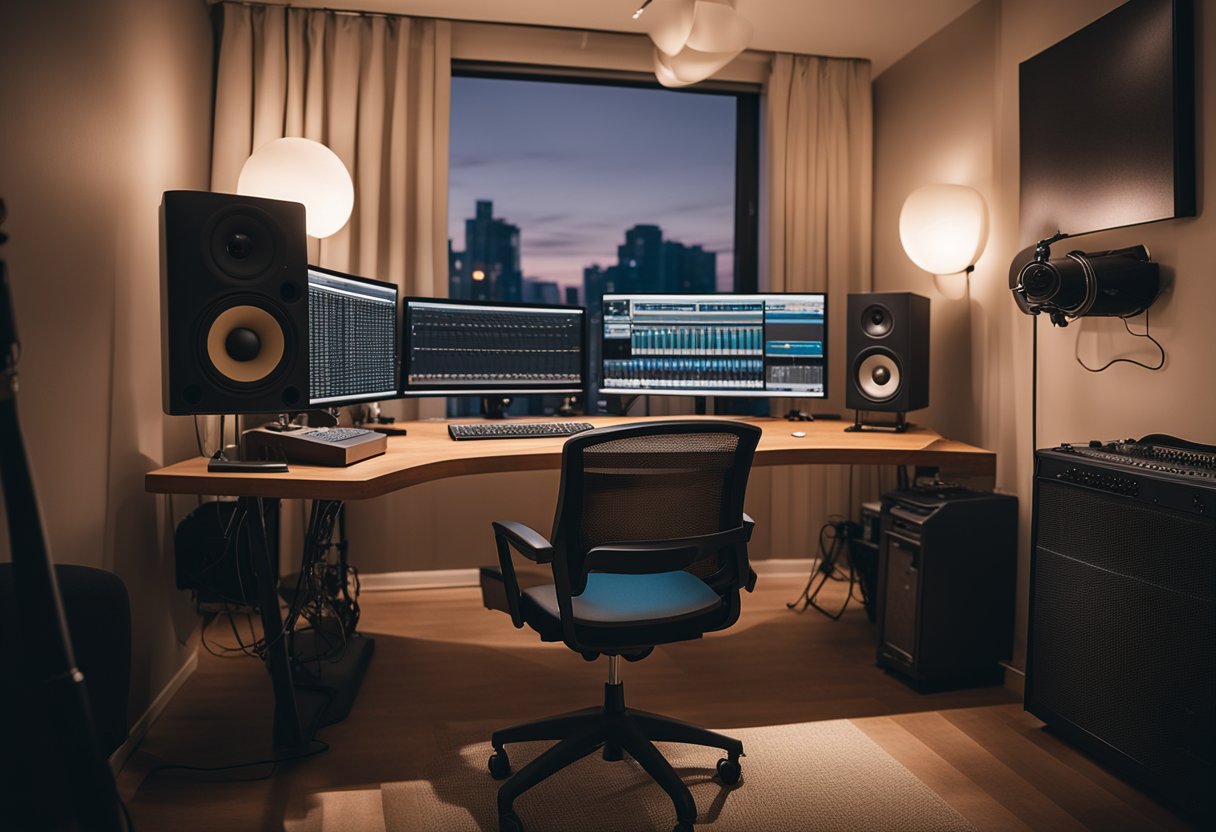Bedroom Recording Studio Design: Tips and Ideas for Creating Your Dream Space
If you’re an aspiring musician or producer, you may have considered setting up a recording studio in your bedroom. With the right design and equipment, a bedroom recording studio can be a great way to unleash your creativity and produce professional-quality music. However, designing a well-equipped and functional bedroom studio can be a daunting task, especially if you’re new to the world of recording.

To help you get started, this article will cover the essentials of bedroom studio design, including technical aspects and gear selection. You’ll learn about the benefits of a well-designed room, how to choose the right equipment for your needs, and how to set up your studio for optimal sound quality.
Whether you’re a seasoned producer or just starting out, this guide will provide you with the knowledge and tools you need to create a professional-grade bedroom recording studio. So, let’s get started and turn your bedroom into a creative sanctuary.
Key Takeaways
- A well-designed bedroom recording studio can help unleash your creativity and produce professional-quality music.
- Proper gear selection and technical aspects are crucial for optimal sound quality.
- With the right knowledge and tools, anyone can set up a professional-grade bedroom recording studio.
Essentials of Bedroom Studio Design

Designing a bedroom recording studio can be a challenging task, but with the right approach, you can create a comfortable and efficient space to produce your music. Here are some essential aspects to consider when designing your bedroom studio:
Choosing the Right Equipment
The first step to designing your bedroom studio is choosing the right equipment. You need to consider the type of music you want to produce and the equipment required to achieve your desired sound. Some essential equipment includes a microphone, audio interface, studio monitors, cables, headphones, computer, and a DAW software with plugins.
Acoustic Treatment and Monitoring
Acoustic treatment is an essential aspect of designing a bedroom studio. You need to consider the acoustics of your space, including bass traps, foam, and acoustic panels to control reflections and frequency response. You also need to consider the placement of your studio monitors and listening position to achieve the best sound possible.
Furniture and Layout Considerations
Furniture and layout considerations are vital when designing your bedroom studio. You need to consider the desk and chair for your recording space and the layout of your desk/mixing area. You also need to consider the placement of your equipment, including XLR cables, midi keyboard, USB cables, power cables, monitor stands, and mic stands.
Technical Setup and Connectivity
Technical setup and connectivity are essential aspects of designing your bedroom studio. You need to consider the technical setup of your equipment, including the audio interface, midi controller, and keyboard. You also need to consider the connectivity of your equipment, including USB cables and power cables.
Designing for Comfort and Efficiency
Designing for comfort and efficiency is an essential aspect of designing your bedroom studio. You need to consider ergonomics, including the desk and chair, to ensure that you are comfortable during long recording sessions. You also need to consider the interior design, lighting, and aesthetics to create a comfortable and inspiring space.
Optimising for the Best Sound
Optimising for the best sound is an essential aspect of designing your bedroom studio. You need to consider the acoustics of your space, including bass traps, foam, and acoustic panels to control reflections and frequency response. You also need to consider the placement of your studio monitors and listening position to achieve the best sound possible.
Incorporating Personal Style
Incorporating personal style is an essential aspect of designing your bedroom studio. You need to consider decor and art to create a space that reflects your personal style and inspires creativity.
Budget-Friendly Solutions
Budget-friendly solutions are an essential aspect of designing your bedroom studio. You need to consider affordable options and cost-effective DIY solutions to create a functional and inspiring space without breaking the bank.
Advanced Techniques for Seasoned Artists
Advanced techniques are an essential aspect of designing your bedroom studio for seasoned artists. You need to consider high-end gear and advanced equipment to take your music production to the next level.
Maintaining a Flexible Recording Environment
Maintaining a flexible recording environment is an essential aspect of designing your bedroom studio. You need to consider creating a multi-purpose room that can adapt to different recording needs and maintain a flexible space for future growth.
Technical Aspects and Gear Selection

Setting up your bedroom recording studio requires careful planning and attention to detail. In this section, we’ll discuss the technical aspects and gear selection that you need to consider to create a professional-sounding recording space.
Selecting the Right Microphone
A high-quality microphone is essential for recording vocals and instruments. The Shure SM57 is a popular choice for recording vocals and guitar amps, but there are many other options available. When selecting a microphone, consider factors such as frequency response, polar pattern, and sensitivity.
The Heart of Your Studio: Audio Interface
An audio interface is the central hub of your recording setup. It connects your microphone, instruments, and studio monitors to your computer. Look for an interface with high-quality preamps, low latency, and plenty of connectivity options.
Monitoring Your Mix: Studio Monitors
Studio monitors are essential for accurately hearing your recordings. Look for monitors with a flat frequency response, and position them in a symmetrical equilateral triangle around your listening position. Monitor stands can help improve the sound quality by isolating the speakers from the surface they’re placed on.
Computing Power: Choosing a PC or Mac
Your computer is the brain of your recording setup. Look for a computer with plenty of RAM and processing power to handle the demands of recording and mixing music. Consider adding a secondary computer monitor to increase your workspace and improve workflow.
DAW and Software Essentials
A digital audio workstation (DAW) is the software you use to record, edit, and mix your music. Popular DAWs include FL Studio, Logic Pro X, and Ableton Live. Look for a DAW that suits your workflow and includes the plugins and features you need to create your music.
Furniture for Your Studio: Desk and Chair
A comfortable and ergonomic studio desk and chair are essential for long recording sessions. Look for a desk that provides plenty of workspace and includes cable management to keep your setup organized. A comfortable office chair can help prevent fatigue and improve your posture.
Cables and Accessories
Cables and accessories are essential for connecting your gear and improving your sound quality. Look for high-quality XLR cables for your microphone and balanced cables for your studio monitors. Pop filters and mic stands can improve the sound quality of your recordings, while MIDI controllers and music instruments can enhance your creativity.
Enhancing Creativity with MIDI Controllers
MIDI controllers are a great way to add expression and creativity to your music. Look for a MIDI keyboard or controller that suits your needs and includes the features you need to create your music.
Acoustic Treatment for Optimal Sound
Poor acoustics can ruin the sound quality of your recordings. Acoustic treatment, such as acoustic panels, bass traps, foam, and diffusers, can help improve the sound quality of your room. Look for acoustic treatment options that suit your budget and improve the sound quality of your recordings.
With careful planning and attention to detail, you can create a professional-sounding recording space in your bedroom. Consider the technical aspects and gear selection we’ve discussed in this section to create a setup that suits your needs and budget.
Frequently Asked Questions

How can I maximise space in a small bedroom for a recording studio setup?
If you have a small bedroom and want to set up a recording studio, then you need to be creative with your space. One way to maximise space is by using multi-purpose furniture, such as a desk that doubles as a studio desk and a regular desk. You can also use wall-mounted shelves to store your equipment and free up floor space. Additionally, you can use a folding screen to create a separate area for recording.
What are the essential components for a bedroom recording studio?
The essential components for a bedroom recording studio include a computer, audio interface, studio monitors, microphone, headphones, and a Digital Audio Workstation (DAW) software. You can also add other components such as a MIDI controller, preamp, and outboard gear to enhance your recording capabilities.
How do I acoustically treat my bedroom for high-quality sound recording?
Acoustic treatment is crucial for achieving high-quality sound recording in your bedroom studio. You can use acoustic panels, bass traps, and diffusers to control the sound reflections and eliminate unwanted noise. You can also use carpets, curtains, and furniture to absorb sound and reduce echoes.
What are some creative design ideas for a home music studio interior?
The interior design of your home music studio plays a significant role in creating a conducive environment for creativity and inspiration. You can use bold colours, creative lighting, and artwork to add personality to your studio. You can also use acoustic panels as decorative wall art to enhance the aesthetics of your studio.
How do I ensure proper ventilation in my bedroom studio without compromising sound quality?
Proper ventilation is essential for maintaining a healthy environment in your bedroom studio. You can use an air purifier or dehumidifier to improve air quality without affecting sound quality. You can also use soundproof curtains or acoustic panels to block external noise while allowing air to circulate.
What lighting should I consider for creating the right ambiance in a home recording studio?
Lighting is crucial for creating the right ambiance in your home recording studio. You can use natural light to create a warm and inviting atmosphere. You can also use dimmable LED lights to adjust the lighting to your preference. Additionally, you can use coloured lights to create a mood and enhance the aesthetics of your studio.



